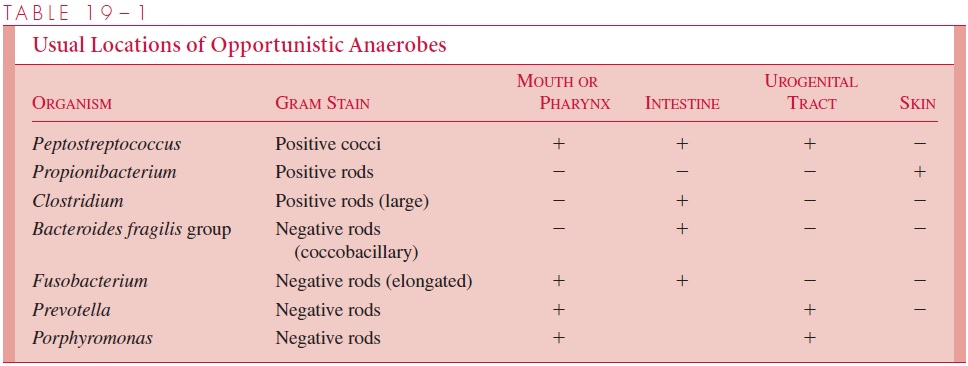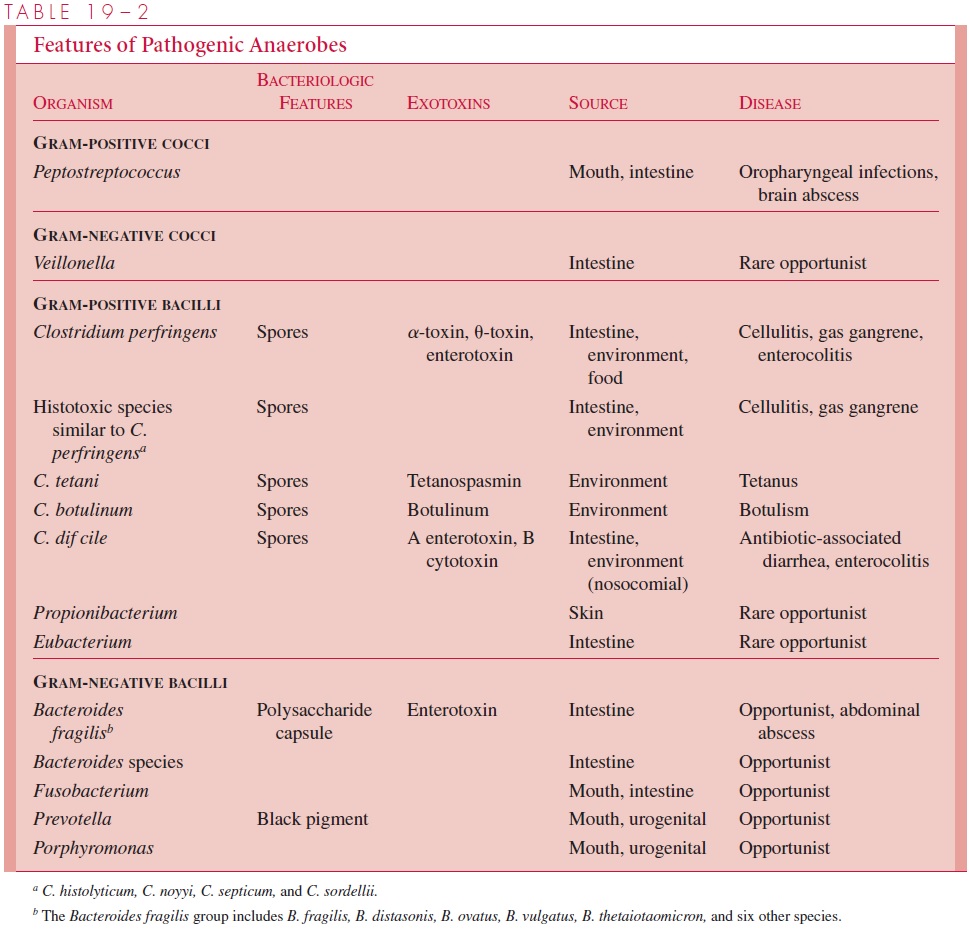Chapter: Medical Microbiology: An Introduction to Infectious Diseases: Clostridium, Peptostreptococcus, Bacteroides, and Other Anaerobes
Bacteriology : Anaerobic Bacteria
BACTERIOLOGY : ANAEROBIC BACTERIA
Anaerobes not only survive under anaerobic conditions, they require them to initiate and sustain growth. By definition, anaerobes fail to grow in the presence of 10% oxygen, but some are sensitive to oxygen concentrations as low as 0.5% and are killed by even brief exposures to air. However, oxygen tolerance is variable, and many organisms can survive in 2 to 8% oxygen, including most of the pathogenic species. The mechanisms involved are incompletely understood but clearly represent a continuum from species described as aerotolerant to those that require the culture medium to be prepared and stored underanaerobic conditions.
Anaerobes lack the cytochromes required to use oxygen as a terminal electron accep-tor in energy-yielding reactions, and thus generate energy solely by fermentation . Some anaerobes will not grow unless the oxidation-reduction potential is extremely low (-300 mV), because critical enzymes must be in the reduced state to be active, aerobic conditions create a metabolic block.
Another element of anaerobiosis is the direct susceptibility of anaerobic bacteria to oxygen. For most aerobic and facultative bacteria, catalase and/or superoxide dismutase neutralize the toxicity of the oxygen products hydrogen peroxide and superoxide . Most anaerobes lack these enzymes and are injured when these oxygen prod-ucts are formed in their microenvironment. As will be discussed below, some of the most virulent anaerobic pathogens are able to produce catalase or superoxide dismutase.
CLASSIFICATION
The anaerobes indigenous to humans include almost every morphotype and hundreds of species. Typical biochemical and cultural tests are used for classification, although this is difficult because the growth requirements of each anaerobic species must be satisfied. Characterization of cellular fatty acids and metabolic products by chromatography has been useful for many anaerobic groups. Nucleic acid base composition and homology have been used extensively to rename older taxonomy. The genera most commonly asso-ciated with disease are shown in Table 19 – 1 and discussed below.

Anaerobic Cocci
Virtually all the medically important species of anaerobic Gram-positive cocci are now classified in a single genus, Peptostreptococcus. With Gram staining, these bacteria are most often seen as long chains of tiny cocci. Veillonella, a Gram-negative genus, deserves mention because of its potential for confusion with Neisseria, the only other Gram-negative coccus .
Clostridia
The clostridia are large, spore-forming, Gram-positive bacilli. Like their aerobic counter- part, Bacillus, clostridia have spores that are resistant to heat, desiccation, and disinfec- tants. They are able to survive for years in the environment and return to the vegetative form when placed in a favorable milieu. The shape of the cell and location of the spore varies with the species, but the spores themselves are rarely seen in clinical specimens.
The medically important clostridia are potent producers of one or more protein exo- toxins. The histotoxic group including Clostridium perfringens and five other species(see Table 19 – 2) produces hemolysins at the site of acute infections that have lytic ef- fects on a wide variety of cells. The neurotoxic group including C. tetani andC. botu- linum produces neurotoxins that exert their effect at neural sites remote from the bacteria. C. difficile produces enterotoxins and disease in the intestinal tract. Many of the morethan 80 other nontoxigenic clostridial species are also associated with disease.

Nonsporulating Gram-positive Bacilli
Propionibacterium is a genus of small pleomorphic bacilli sometimes called anaerobic diphtheroids because of their morphologic resemblance to corynebacteria. They are among the most common bacteria in the normal flora of the skin. Eubacterium is a genus that includes long slender bacilli commonly found in the colonic flora. These organisms are occasionally isolated from infections in combination with other anaerobes but rarely produce disease on their own.
Gram-negative Bacilli
Gram-negative, non – spore-forming bacilli are the most common bacteria isolated from anaerobic infections. In the past, most species were lumped into the genusBacteroides, which still exists but now includes five other genera. Of these, Fusobacterium, Porphy-romonas, and Prevotella are medically the most important. TheBacteroides fragilis group contains B. fragilis and 10 similar species noted for their virulence and production of β-lactamases. (Species outside this group generally lack these features and are more similar to the other anaerobic Gram-negative bacilli.) B. fragilis is a relatively short Gram-negative bacillus with rounded ends sometimes giving a coccobacillary appear-ance. The lipopolysaccharide (LPS) in its outer membrane has a much lower lipid content and thus lower toxic activity than that of most other Gram-negative bacteria. Virtually all B. fragilis strains have a polysaccharide capsule and are relatively oxygen tolerant through production of superoxide dismutase.Prevotella, Porphyromonas, and Fusobacterium are distinguished by biochemical and other taxonomic features. Pre-votella melaninogenica forms a black pigment in culture, and Fusobacterium, as itsname suggests, is typically elongated and has tapered ends.
Related Topics